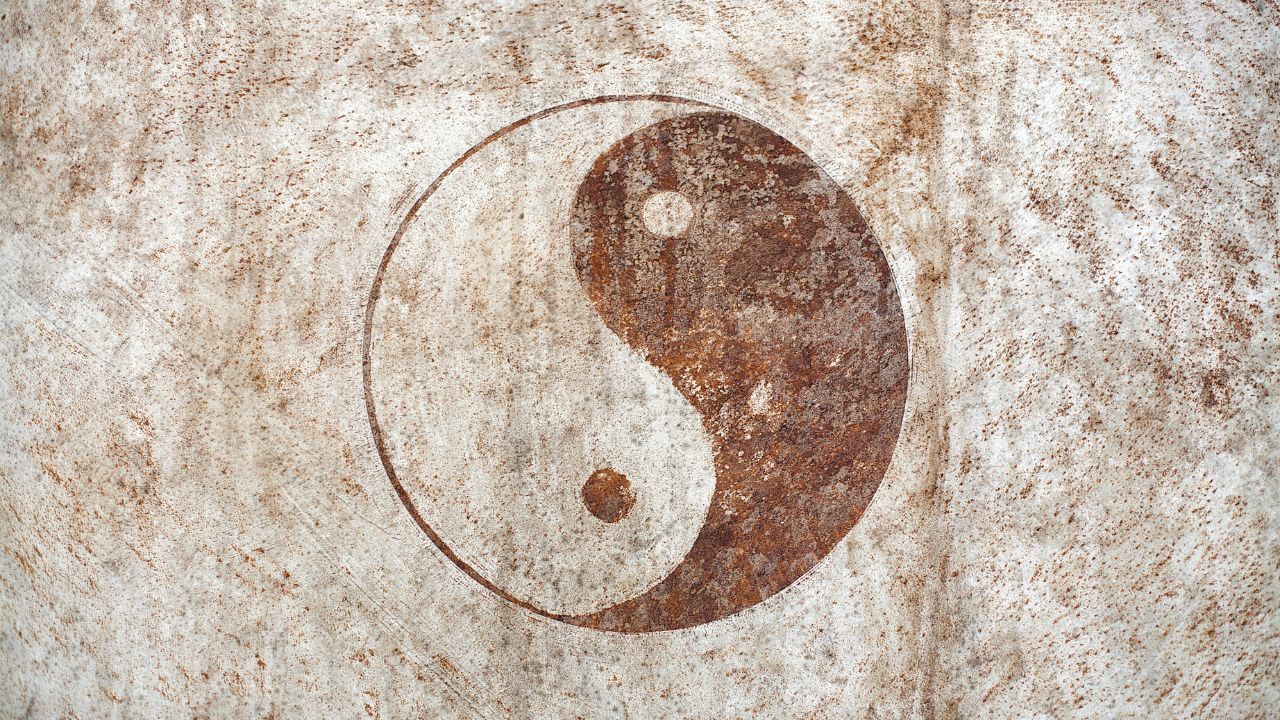Table of Contents
Welcome to the fascinating world of Yin and Yang! If you’ve ever encountered this mystical symbol, then you know it’s more than just a black-and-white circle. It represents an ancient Chinese philosophy that encompasses everything from nature to human behavior. While it may seem complex at first glance, understanding Yin and Yang is surprisingly simple once you unravel its mysteries. In this blog post, we’ll delve deep into the origins, meaning, and significance of Yin and Yang so that by the end, you’ll have a newfound appreciation for this timeless symbol. So relax, grab yourself a cup of tea (preferably green), and let’s begin our journey together!
What is Yin and Yang?
Yin and Yang is a concept that originated in ancient Chinese philosophy. It’s a symbol of two complementary yet opposing forces that are present in everything around us. Yin represents the feminine, passive, dark, cold, and intuitive aspects of life. On the other hand, Yang embodies the masculine, active, bright, warm and logical qualities.
The symbol itself is circular with a black half representing Yin and white half signifying Yang. There’s also a small dot in each section to indicate that they’re not entirely separate from one another – they coexist and depend on each other for balance.
In essence, Yin and Yang represent duality – two opposites that complement each other perfectly. They denote how seemingly different things can be interconnected and interdependent on one another while maintaining their uniqueness.
This concept has practical applications too – it helps individuals understand themselves better by recognizing both yin-like traits (introspection) as well as yang-like characteristics (assertiveness).
Understanding what Yin-Yang means goes beyond just learning about some basic philosophical concepts; it allows us to appreciate the beauty of balance between contrasting elements in our daily lives!
Also Read: The Significance of Dragonfly Symbolism: Unlocking the Mysteries of Nature’s Winged Beauty
The History of Yin and Yang
The concept of Yin and Yang dates back to ancient Chinese philosophy. It is believed to have originated from the I Ching or Book of Changes, which was written over 3,000 years ago.
According to legend, the concept was first introduced by Fu Xi, a legendary ruler and cultural hero in China. He observed that everything in life could be divided into two parts – yin and yang.
Throughout history, many philosophers have explored the meaning of Yin and Yang. One famous philosopher who contributed greatly to our understanding of this concept was Confucius. He believed that balance between yin and yang was essential for harmony in society.
During the Han Dynasty (206 BCE–220 CE), Yin and Yang became associated with astrology as well as medicine. Physicians used this theory to diagnose illnesses based on imbalances in a person’s body.
Today, Yin and Yang is still an important aspect of traditional Chinese medicine as well as martial arts such as Tai Chi. The symbol has also become popular worldwide as a representation of balance between opposing forces in life.
The Meaning of Yin and Yang
Yin and Yang are two opposing forces that represent the duality of everything in existence. They are not just simple symbols, but they hold a deep philosophical meaning that has guided many aspects of Chinese culture for centuries.
The symbol of Yin and Yang is composed of two halves, one black (Yin) and one white (Yang), each containing a dot of the opposite color. This represents the idea that each force contains a seed of its opposite within it, indicating an interdependence between them.
Yin is known as the feminine force which represents darkness, coldness, passivity, and introspection. While Yang is considered masculine energy characterized by brightness, warmth, activity and extroversion.
In reality however nothing can be entirely yin or yang because both energies contain elements from each other; like light cannot exist without darkness or good without evil.
The balance between these seemingly opposing forces creates harmony in all things. To maintain this equilibrium we must strive to find moderation in our actions and resist extremes as they tip us off-balance creating chaos instead if harmony.
Ultimately understanding Yin-Yang means recognizing how interconnected our world really is given no single aspect exists alone but rather forms partof larger cycle where everything compliments something else.
The Five Elements Theory
The Five Elements Theory is a concept in traditional Chinese philosophy that explains the interactions and relationships between different elements. These elements are Wood, Fire, Earth, Metal, and Water. Each element represents different characteristics and aspects of life.
Wood represents growth and creativity while fire symbolizes passion and transformation. Earth embodies stability and nourishment for all living things. Metal stands for strength and clarity whereas water embodies fluidity, flexibility, and adaptability.
According to the theory, these five elements interact with each other in two ways: generating cycle or destructive cycle. The generating cycle explains how one element generates another while the destructive cycle shows how one element controls or weakens another.
This theory has been used in various fields such as acupuncture, Feng Shui designs of buildings or landscaping patterns according to natural laws balance forces within their environment.
Understanding this theory helps us find balance in our lives by recognizing which element we need more of at any given time depending on our current situation; whether it’s finding more creativity through wood energy or seeking clarity through metal energy.
Yin and Yang in our Everyday lives
Incorporating Yin and Yang principles into our daily lives can lead to a more balanced and harmonious existence. One example of this is in the food we eat. In traditional Chinese medicine, certain foods are considered yin or yang based on their energetic properties. Consuming too much of one type can throw off the balance in our body, leading to health issues.
Another way to bring balance into our lives is through exercise. Practices like yoga and tai chi incorporate both yin (calming) and yang (energizing) movements, helping to create a sense of harmony within the body.
The concept of yin and yang also applies to relationships with others. Balancing give-and-take dynamics allows for healthy, mutually beneficial relationships rather than imbalances that can lead to resentment or burnout.
Even something as simple as decorating your home with a mix of light (yin) and dark (yang) colors or incorporating both soft textures (yin) and hard surfaces (yang) can create an environment that promotes balance.
By being mindful of how we incorporate yin and yang principles into our everyday lives, we can cultivate greater harmony within ourselves, our relationships, and our surroundings.
Also Read: Unlocking the Secrets of Alchemy: The 22 Key Symbols and Their Meanings
Conclusion
Yin and Yang are essential concepts in Chinese philosophy that have influenced various aspects of life for thousands of years. Understanding the balance between these two forces can help us lead a more harmonious life by recognizing the interconnectedness of everything around us.
By applying the principles of Yin and Yang to our daily lives, we can improve our relationships, health, work-life balance, and overall well-being. The Five Elements Theory provides an excellent framework for understanding how these forces work together.
It’s important to remember that Yin and Yang are not static entities but rather dynamic ones that constantly interact with each other. Embracing change is key to achieving harmony within ourselves and with others.
By striving towards balancing both Yin and Yang in every aspect of our lives, we can achieve greater peace and fulfillment. So take some time to reflect on which elements in your life may be out of balance and start making small adjustments today!








